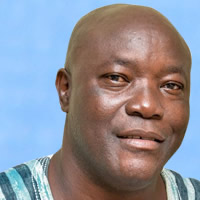On the educational front, there are 105 nursery schools, 118 primary schools, 79 junior secondary schools, 11 senior secondary and technical schools in the metropolitan Area.The Takoradi Polytechnic is one of the most highly regarded tertiary educational institutions in Ghana, and is particularly useful in producing technical and science-based manpower for use by industry.
The Metropolitan Authority gets water supply for the metropolis from the Pra River at Daboase and Anankwari River at Inchaban.However, current production is less than demand, with about 90% of the metropolis covered by supply.There are currently four fire stations in the metropolis and 39 fire hydrants located across the metropolis.
There is also a railway service that links Sekondi Takoradi to other parts of the country. Incidentally, the headquarters of the Ghana Railway Corporation is at Takoradi. The corporation offers both passenger and freight services. Telecommunications system in Sekondi Takoradi is very efficient having undergone an extensive modernization including internet facilities. The visitor to the Metropolis or the investor can access any part of the world without hindrance.
Public safety is of paramount importance to the metropolitan authorities, hence the efficient policing of crime in the Metropolis, which renders the crime rate very low. Almost 90 percent of the Metropolis has access to potable water supply. About 9 million gallons of water is produced per day. The city enjoys hydroelectric power with about 96 per cent of the area energized. There is a thermal plant, which also produces 300 megawatts of power at Aboadze in the Metropolis. This supplements hydropower generated at Akosomho and generates energy for industrial activities.
The metropolis is served by road, rail, air and sea, with Takoradi hosting one of Ghana’s two sea ports. The Metropolitan Assembly, which governs the metropolis, is currently in the middle of a five-year medium term development plan, which aims to significantly improve both physical infrastructure and social service quality.
Roads
Most of the infrastructural facilities in the Metropolis, particularly those within the urban centers have been over stretched. There is rapid development taking place in the hinterland and significant number of these of areas are without access roads.
The condition of the road network in the Metropolis stands at 51.6%Good, 28.2% Fair and 19.6% Poor. The total length of all weather roads in the Metropolis has been extended from 330.9km in 1996 to cover 400km. Areas such as Awuna Beach has been linked to the main Cape Coast road while Komfoeku and Assakae roads have been developed.
Out of a total length of 212.9km of the urban roads, over 150.0km has been tarred, 40.0km of gravel road while 23.0km are of simple earth. Road construction works in the Metropolis have been grouped into seven main categories. These are Arterial Network development, Rehabilitation and Maintenance of Local roads, Roads in Depressed Areas, Roads in Newly Developed Areas, Rehabilitation of Feeder Roads as well as Traffic Management.
Rehabilitation and Maintenance of Local Roads
The roads in the high-income low low-density have a good network of surface dressed roads. However, most of these roads have seen little or no maintenance since they were constructed. These areas include Chapel Hill, Beach Road and Windy Ridge. Most section of the local roads have developed cracks and potholes.
The local roads within the middle-low income high-density areas are mostly an engineered. Drainage within these areas is generally poor and gullies are a common phenomenon on most of the roads. The level of socio-economic activities within these areas is moderate; however, there is a likelihood that these activities will increase rapidly with road improvement. These areas include West and East Tanokrom, part of Apremdu, Fijai and Effia. Traffic volume generally, on all the local roads is low with an AADT below 1500 vehicle.
Maintenance of Depressed Area Roads
Due to the presence of the Takoradi Harbour, fuel installation as well as numerous Timber firms have been located in the Region the Metropolis have heavy-duty vehicles and these trucks constitute close 12% the traffic volume in the Metropolis.
A site at the Fijai by-pass is being developed into a terminal for these vehicles. The terminal which occupies an area of 860m close 45% of the land area has been cleared and is in use. The site for the heavy-duty trucks is hilly and requires cutting and levelling in order to create adequate parking space for the vehicles. The area is dusty and poorly drained. It also lacks basic services such as water, electricity and sanitary facilities.
The cargo station at Fijai and a minor one at Kwesiminstim will require priority attention in order to avert indiscriminate parking in the City by the trucks. Economic integration is being fostered on the Africa Continent and the plan to use the Takoradi Harbour to ferry goods and landlocked countries such as Bukina Faso requires that more of such terminals and warehouses be developed.
Three transport terminals for passenger vehicle have developed. Two at Takoradi and one at Sekondi. They are o cater for on-street station and are to be privately managed. Vehicle waiting sheds or bus stops are completely absent in the city. Passengers, particularly patients from the hospital often have to wait for long periods under the scorching sun for cars.
Traffic Management
There are adequate road signs, marking, signal and good drainage facilities in the CBD of Takoradi in particular. All the asphalt sections of the city from Central Takoradi to Effia-Nkwanta Hospital have pedestrian’s walkways, lay byes, pedestrian crossing and traffic lights. The city is poorly illuminated and non-motorized transport such as bicycle lanes are also none existence.
Electricity/Power Generation
The power requirement of the Metropolis is about 49MW. Through the Self Help Electricity Program (SHEP) almost 90% of the Metropolis has been connected. Street lighting is however a problem in the city. The Cape Coast road in Takoradi (Telecom-BAT) is partially illuminated. All ceremonial routes within the City are also without lights.
A number of communities in the metropolis are without electricity, these include Awuna Beach and Aboso Nkran. Newly schemed areas such as Whindo, Ituma and others also require appropriate transformers to meet the needs of the communities. The Metro as a whole experiences frequent power outages.
Power Generation
A 330 megawatt combined cycle thermal plant has been established at Aboadze near Sekondi. This Plant supplements hydro electricity, which is vulnerable and depended on rainfall. The Aboadze Plant is capable of providing 2457 gig-watt hour of power at 85%cabability. The generating plant currently By lightened oil.
It has the capability to also use gas. This will come on board with the extension of the West Africa Gas Pipeline in the year 2003. The total generation potential of the Thermal Plant is 660 megawatts. An estimated £0441 million has been spent on this project which is the country’s single biggest undertaken in recent times.
Date Created : 11/21/2017 2:45:40 AM





 facebook
facebook X (twitter)
X (twitter) Youtube
Youtube +233 593 831 280
+233 593 831 280 0800 430 430
0800 430 430 GPS: GE-231-4383
GPS: GE-231-4383 info@ghanadistricts.com
info@ghanadistricts.com Box GP1044, Accra, Ghana
Box GP1044, Accra, Ghana